What is a Turning Insert?
Turning is the most common process of metal cutting and is used to produce components cylindrical or rounded in nature, which are symmetric towards an axis. Some forms of turning operations are shown below, these include facing, taper, contour, form turning, chamfering, boring, drilling, etc. Turning basically involves a rotating workpiece with a stationary tool.
List of Helpful Tips to Choose the Right Turning Insert
Turning inserts are manufactured in a variety of shapes, sizes, and grades. The shapes may vary from rhombus, square, triangle to trigon, round, octagonal, etc. The sizes also vary according to the shapes and grades vary according to the brand.
Every turning insert has specification is governed by a standard nomenclature adopted across all brands. The nomenclature is a combination of letters and numbers and tells us a lot about the specification of the insert.
The above insert nomenclature is CNMG 12 04 08. Each letter and number is assigned a number for better understanding. Each letter and number specify the below:-
- Insert Shape
- Clearance angle
- Tolerance
- Type
- Size
- Thickness
- Nose radius
Below is a detailed view on the same.
#1)Insert Shape
The first letter in the insert nomenclature tells us about the shape of the insert. The shape may be round, diamond, square, rhombus, trigon, etc and are denoted by alphabets. Some of the commonly used insert shapes are listed below:-
C: Rhombic 80 degree
D: Rhombic 55 degree
K: Parallelogram 55 degree
R: Round
S: Square
T: Triangle
V: Rhombic 35 degree
W: Trigon
The shape of the insert is very important for the turning operation and not every insert shape can be replaced by the other.
As a general practice, C and W shapes are used for rough machining as they have a larger point angle which leads to more rigidity and can be used at high feed rates. Whereas D and V shapes are used for finishing as they have a smaller point angle, as a result, they have to increased reach for detailing of the workpiece, but they lack the rigidity of the former and thus have to be used at a slower feed rate.
#2)Clearance Angle
The second letter in the nomenclature denotes the clearance angle of the insert. The clearance angle prevents the insert from rubbing the component. The clearance angle is important, especially in internal turning and boring. If proper clearance is not chosen, the insert may rub with the component and not giving the desired result and leading to poor machining. The clearance angle is given as:-
B: Insert with 5-degree clearance
C: Insert with 7-degree clearance
E: Insert with 20-degree clearance
N: Insert with 0-degree clearance
P: Insert with 11-degree clearance
#3)Tolerance
The third letter gives us the tolerance of the insert. It specifies the tolerance of the insert length, inscribed circle, thickness, etc.
#4)Type
The fourth letter lets us about the type of hole and the chip breaker of the insert.
A: Cylindrical hole
G: Cylindrical hole and Double-Sided Chip breaker
M: Cylindrical hole and Single-Sided Chip breaker
N: No hole and no Chip breaker
P: Cylindrical hole and Hi-Double-Positive Chip breaker
Q: 40-60° Double Countersink Hole
R: No-hole and Single-Sided Chip breaker
T: 40-60° Double Countersink Single-sided Chip breaker
W: 40-60° double countersink
X: Special Design
#5)Size
The numeric value of the insert specifies the length of the cutting edge of the insert.
#6)Thickness
This number denotes the thickness of the insert.
#7)Nose Radius
This number denotes the nose radius of the insert. Nose radius plays an important role in reducing the vibration and radial pressure. For minimum vibration, an insert with nose radius smaller than the depth of cut is selected.
Code = Radius Value
04 = 0.4
08 = 0.8
12 = 1.2
16 = 1.6
Advantages of Turning Insert
The advantages of the Turning Insert can be summed up as:
- No need to regrind a tool.
- Better metal removal rates.
- Lower costs, as there is no need of grinding wheel and the Turning insert are cheaper than brazed tip-tools.
- Higher efficiency and quality results.
- Exceptional resistance to abrasion.
Why to Buy Turning Insert Online at Industrybuying.com
When it comes to Turning Insert or other Tooling and Cutting essentials, Industrybuying.com offers branded solutions at best prices online. So be it Annular Cutter, Bimetal bandsaw blades, Carbide Drills, Carbide End Mills, Chucks, Collets & Adaptors, Cutting Blades, Cutting Machine, Diamond Core Drills, Dies, Drill Kit, Drills, End Mills, Hammer Drill Bits or Chisels you can find high-performance tools online.
Check out the wide range of Turning insert online at Industrybuying.com which includes Coated Carbide, Carbide, CVD Coated Carbide, Cermet, PVD Coated, Uncoated Cermet, PVD Coated, Carbide, CVD Coated, Uncoated Carbide, PVD Cermet, PVD Coated Ceramic, Ceramic Coated, etc. Industrybuying offers exclusive prices and discounts on top brands such as Sandvik Coromant, Carboloy, WIDIA, KYOCERA, Korloy, Iscar, TaeguTec, Kennametal, Sumitomo, DESKAR, Tungaloy, YG1 besides many others.
If you are looking to buy in bulk you can save a significant amount on your final order as Industrybuying offers special discounted rates on bulk purchase orders. For purchase orders above Rs, 1,000 the company ships the products free of cost right at your doorsteps. To make the payment you can choose any of the convenient payment modes among Online transactions via Net Banking and Credit/Debit cards or you can opt for Cash On Delivery or any of the available EMI plans. In the case of any doubt or query, you can reach out to us through our Toll-free number 1800-300-09551.

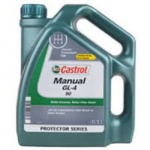
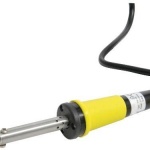
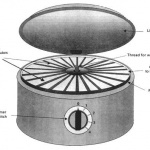
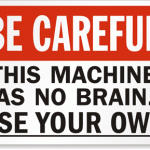

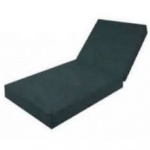

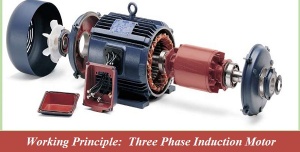
Average Rating